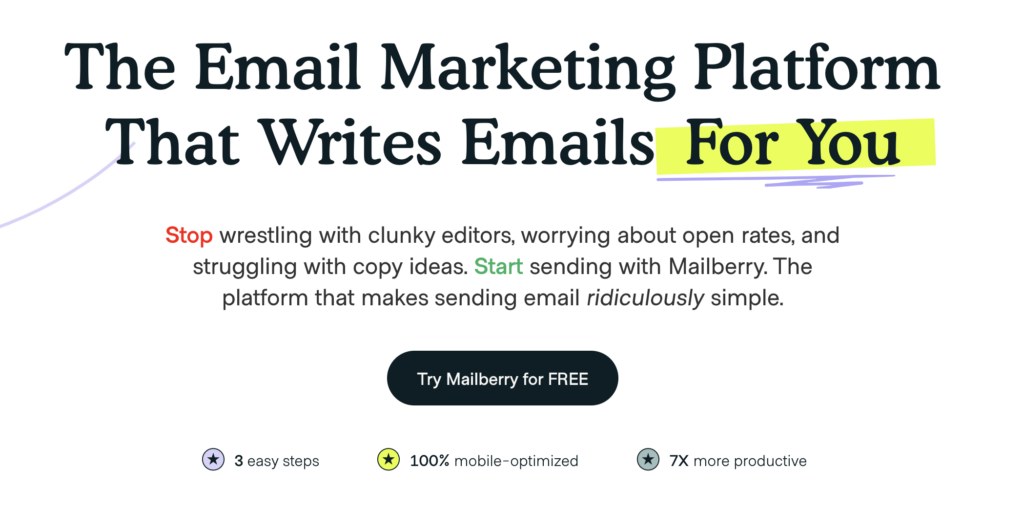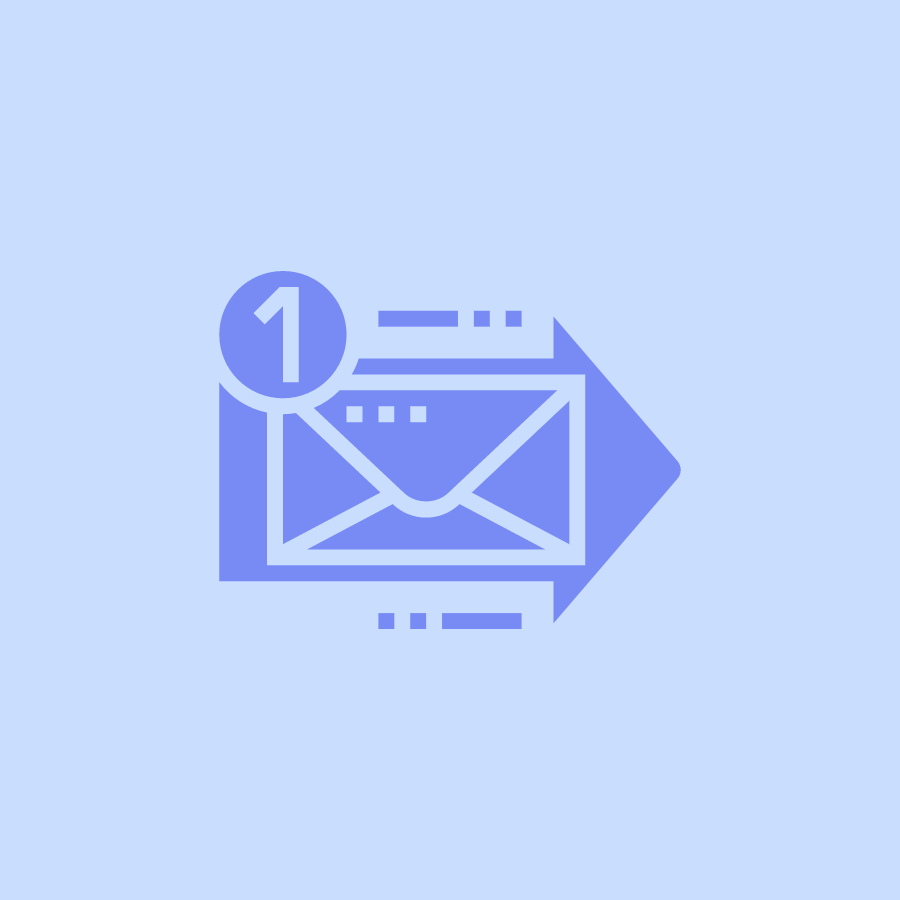If you own a small business, how can you use email marketing to connect with customers, make sales, and grow your revenue?
That’s what we’re talking about in this guide.
From choosing the right tools and collecting emails to creating a schedule and tracking your results, we’re going to show you how to build an email marketing strategy for your small business.
This is for you if you own a restaurant, gym, yoga studio, dentist office, shoe store, or some other brick-and-mortar business.
According to Campaign Monitor, 64% of small businesses use email marketing to reach customers. We’re going to show you how to do that.
Step 1. Determine Your Email Marketing Goals
Before we dive into the nitty gritty, let’s ask ourselves this question: why do you want to start email marketing for your small business?
Your answer will probably include one or several of the following reasons…
- You want to stay connected with your customers.
- You want to keep your customers coming back over and over again.
- You want to build some sort of membership program.
- You want to offer your most loyal customers special deals and discounts.
- You want to build authentic and long-lasting relationships with your customers.
Each of those reasons is a good reason.
But it’s helpful to identify exactly what you’re trying to accomplish before you start doing stuff — because the why will impact the what and the how.
So once you’ve identified your reasons for getting into email marketing, move on to the next step.
Step 2. Choose Your Toolkit
The next step is to choose your software.
You could just collect email addresses in a spreadsheet and send out campaigns one at a time, but that’s a terrible idea for the following reasons.
- It’s not efficient at all.
- Your email account is going to get marked as spam.
What you need is an ESP (or Email Service Provider) — this software will allow you to collect email addresses, send emails to all of your subscribers, and do some other nifty stuff, like triggering emails based on subscriber behavior or creating sequences of emails that get sent in a specific order.
ESPs will also…
- Maintain your sender reputation so you don’t go to the spam folder.
- Provide useful analytics for your email campaigns.
- Easily integrate with lots of other software (like your POS system).
Fortunately, we have one of the easiest-to-use ESPs on the planet (and it’s 100% free to get started!): Mailberry.
The benefit of using Mailberry is that it uses AI to make writing your emails just as easy as posting on social media.
Watch this…

That’s really the only software you need to get started with email marketing. Next, we’ll talk about collecting email addresses.
Step 3. Collect Emails
The next question we have to ask is, how are you going to get subscribers?
A few different strategies come to mind…
- Collect email addresses at the point of sale.
- Collect email addresses on your website.
- Start a membership program and collect email addresses from people who join.
You might do all three.
If nothing else, collecting emails at the point of sale is a great starting place for most brick-and-mortar businesses. Simply get the customer’s email address at the counter and ask if they’d be interested in receiving exclusive deals and discounts. Most people will agree.
If you want to create a bit more incentive, then tell them that they’ll get 10% off today’s purchase if they sign up for your email list where you send out deals and discounts every week — that’ll push most people over the edge and it’ll also encourage them to pay attention to your future emails.
You might even come up with a name for your “member” group, give them a free piece of merchandise (like a key chain or phone case), or give them rewards for referring their friends.
The more benefits you give people for signing up, the more motivated they’ll be to do so.
You could also collect email addresses on your website — when people order something for pick-up or when they make a reservation.
However you do it, make sure you always get explicit permission from the person to add them to your email list.
Step 4. Create a Welcome Email
Now that you’ve started collecting email addresses at the point of sale, the next question is, what are you going to send them?
The first thing you should send is a welcome email. This email should welcome the person to your list, set expectations, and deliver any initial benefits you promised.
And it should be sent immediately after the person is added to your list.
Your welcome email doesn’t need to be complicated.
You basically just want to notify people that they’ve been added to your list and make them excited about what’s coming up.
Tell them what they should expect — How often are you going to email them? What are you going to email them about? What are the benefits of being on your email list?
A simple statement will do the trick…
"We deliver exclusive deals and discounts to our subscribers every single week, so keep an eye out for our emails! We’re excited to have you onboard."
In your ESP, you can create this email and set it to send whenever someone is added to your email list. That way, you can set it and forget it.
Also, ensure to keep your email list clean using email verification tools to remove the dead and inactive subscribers from the list.
Step 5. Create an Email Marketing Schedule
Obviously, you want to send more than just a welcome email to your subscribers.
Your welcome email will set the tone for the rest of the email marketing experience, but staying in touch with your subscribers is where the rubber meets the road.
By periodically delivering promos, discounts, and deals to your subscribers, you’ll improve retention, keep customers coming back for more, and increase lifetime customer value.
All good things.
But how often are you going to send deals to your subscribers?
Only you can answer that question — but sending exclusive deals every week or every other week is a great place to start.
We recommend creating a schedule to indicate what emails you’re going to send and when you’re going to send them… so that you’re a few months ahead of the game.
Doing this will help you line your emails up with the seasons and the holidays, which is a critical part of email marketing — sending discounts and deals related to specific holidays is a great way to boost revenue.
Some holidays that you’ll almost certainly want to organize your promotions around would be…
- Christmas
- 4th of July
- Halloween
- Valentine’s Day
- New Year’s Day
- Thanksgiving
- Saint Patrick’s Day
But you can also research and promote more obscure holidays that fit your industry as an excuse to offer your customers some special deals (just Google for “holidays in [month]” and you’ll find a ton).
If there’s not a holiday to run a promotion around but you still want to keep momentum, here are some additional ideas…
- Offer a discount on a specific product for a limited time.
- Offer a store-wide discount for a limited time.
- Create a refer-a-friend program with rewards.
- Send out free and valuable content.
- Announce new products.
- Share testimonials or case studies.
Get creative, schedule your emails, and be consistent. Over time, your subscribers will start to look forward to your emails and they’ll keep returning to buy from you because of them.
Step 6. Track Your Results
As you’re sending emails to your list, your ESP will automatically track each campaign and report back with some mission-critical metrics.
And while we don’t want you to get too carried away with the metrics — because there’s no such thing as perfect consistency — it is still worth understanding the basics.
Here are the main metrics worth paying attention to…
- Sent — The number of subscribers that the ESP successfully sent the email to.
- Open Rate — The percentage of subscribers who opened the email.
- Click-Through Rate — The percentage of subscribers who clicked within the email.
- Bounce Rate — The percentage of emails that were undeliverable, for one reason or another.
Naturally, the goal is to increase your open rate and click-through rate so that more people view your emails and more people take action with your emails.
This means writing compelling subject lines and having compelling offers inside your emails — both of which are an art-form all their own.
Just do the best you can and keep improving as you send emails and grow your list.
The metrics mentioned above will help you keep track of your progress.
Final Thoughts
Email marketing is probably the best way to stay in touch with your customers if you’re a small business — it’s not invasive… and yet it’s also something that people pay attention to.
We’ve shown you the 6 steps to building an email marketing strategy for your small business — from setting goals and building a list to sending emails and tracking results.
Now all you’ve got to do is take action.
If you do, then you’ll build more lasting and meaningful relationships with your customers. And you’ll also make more money.
